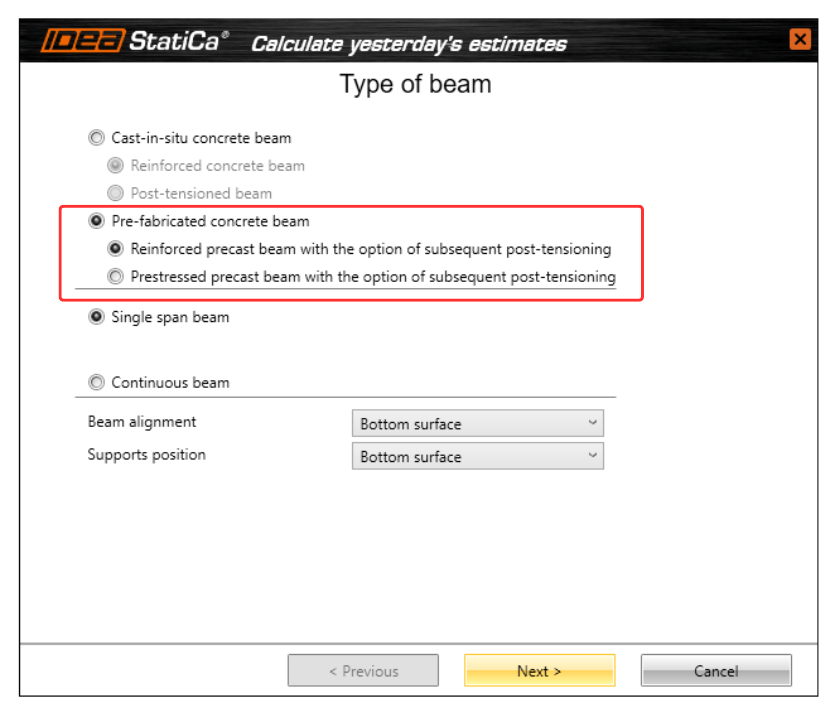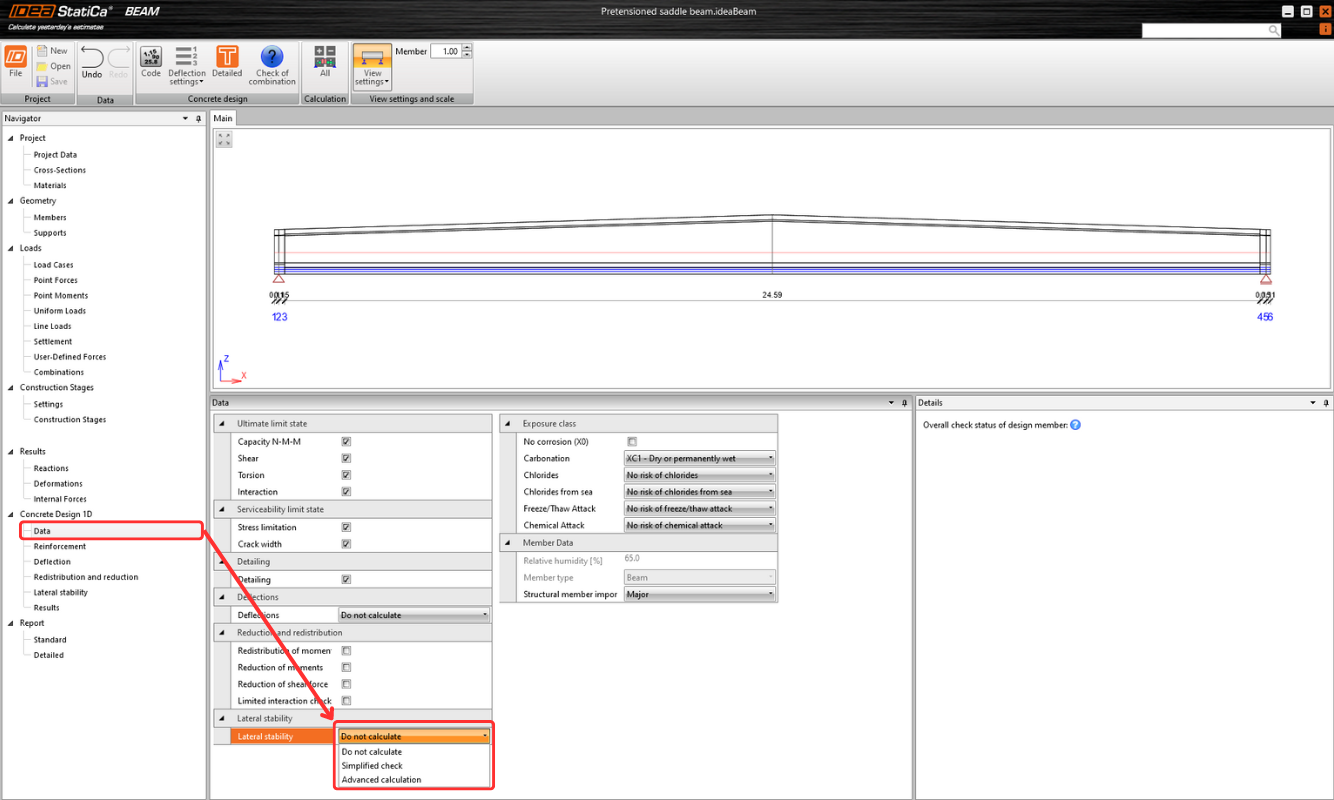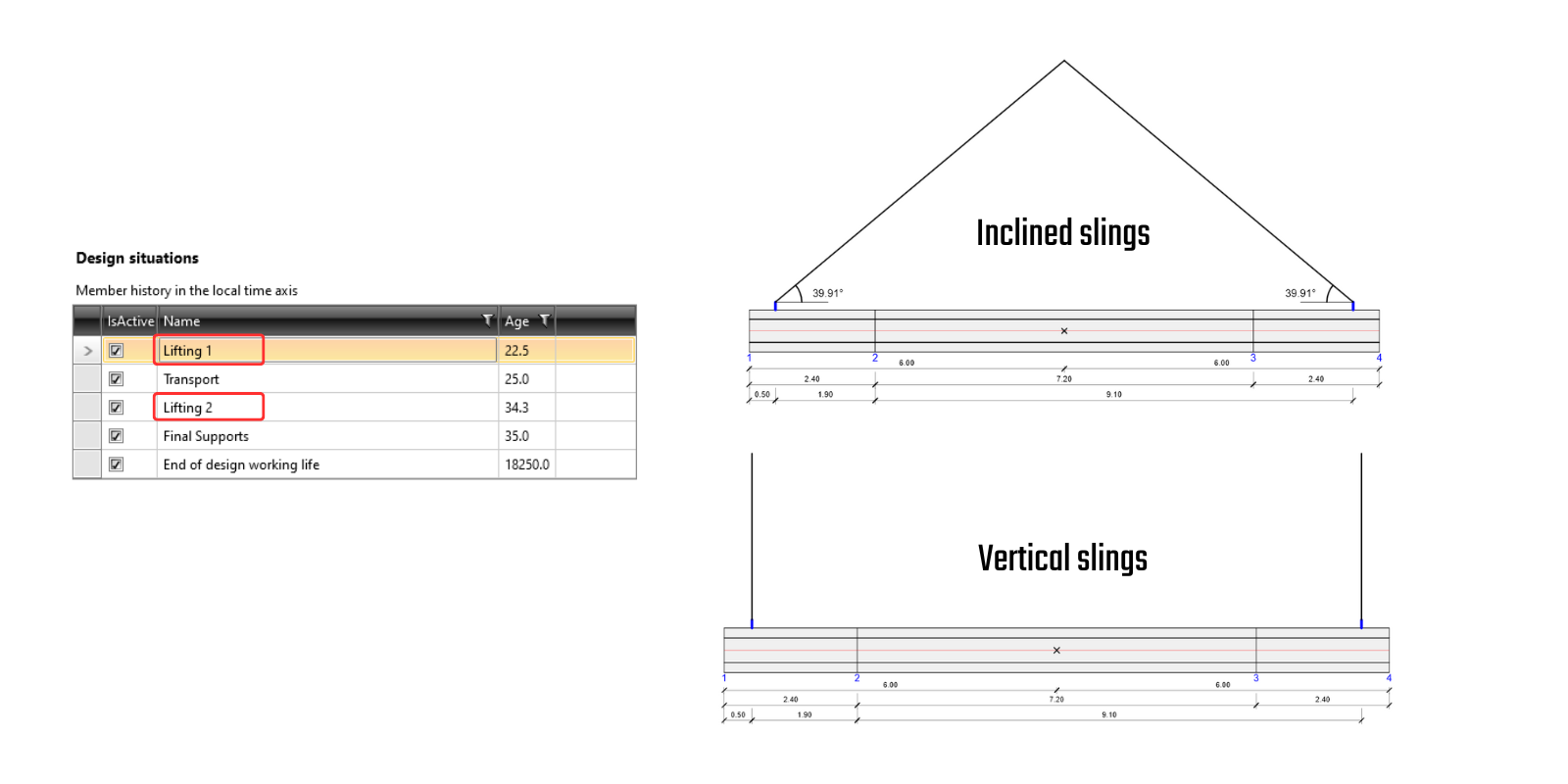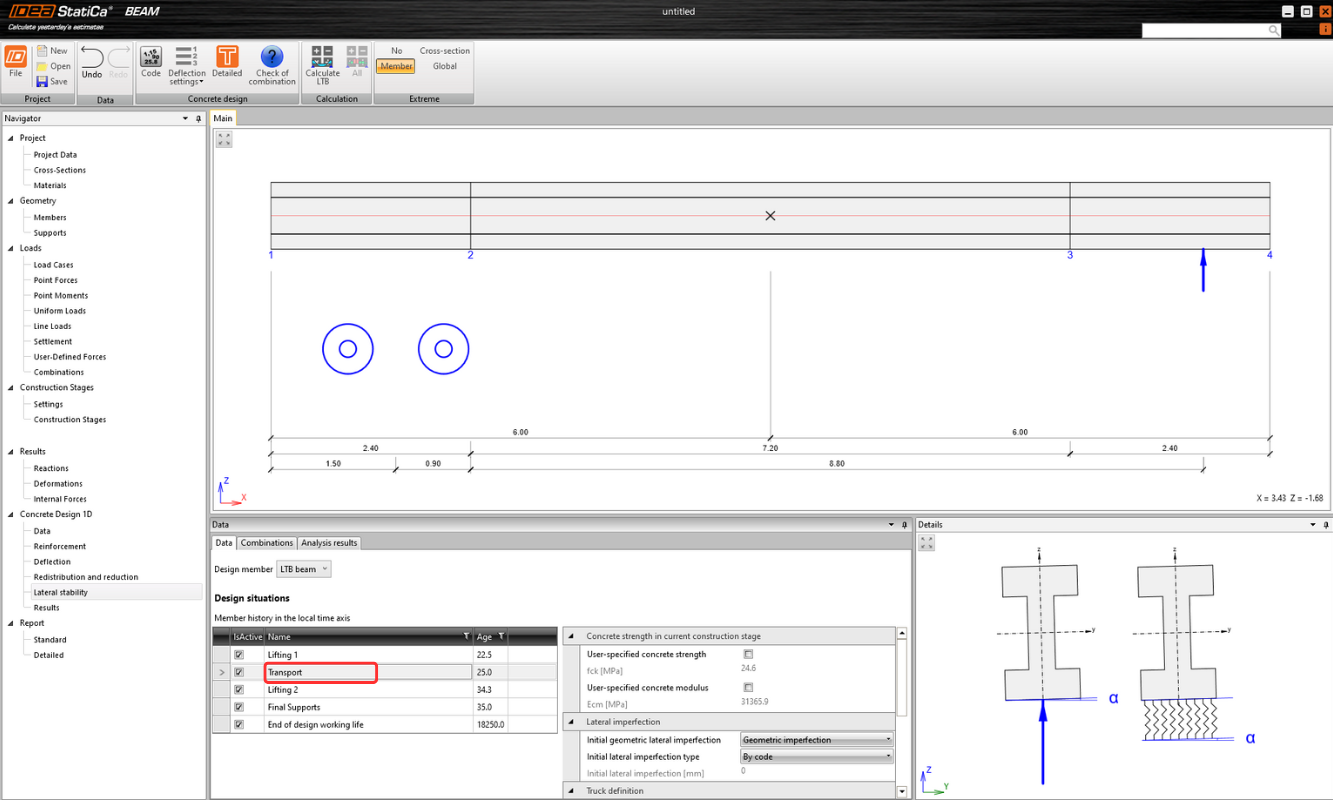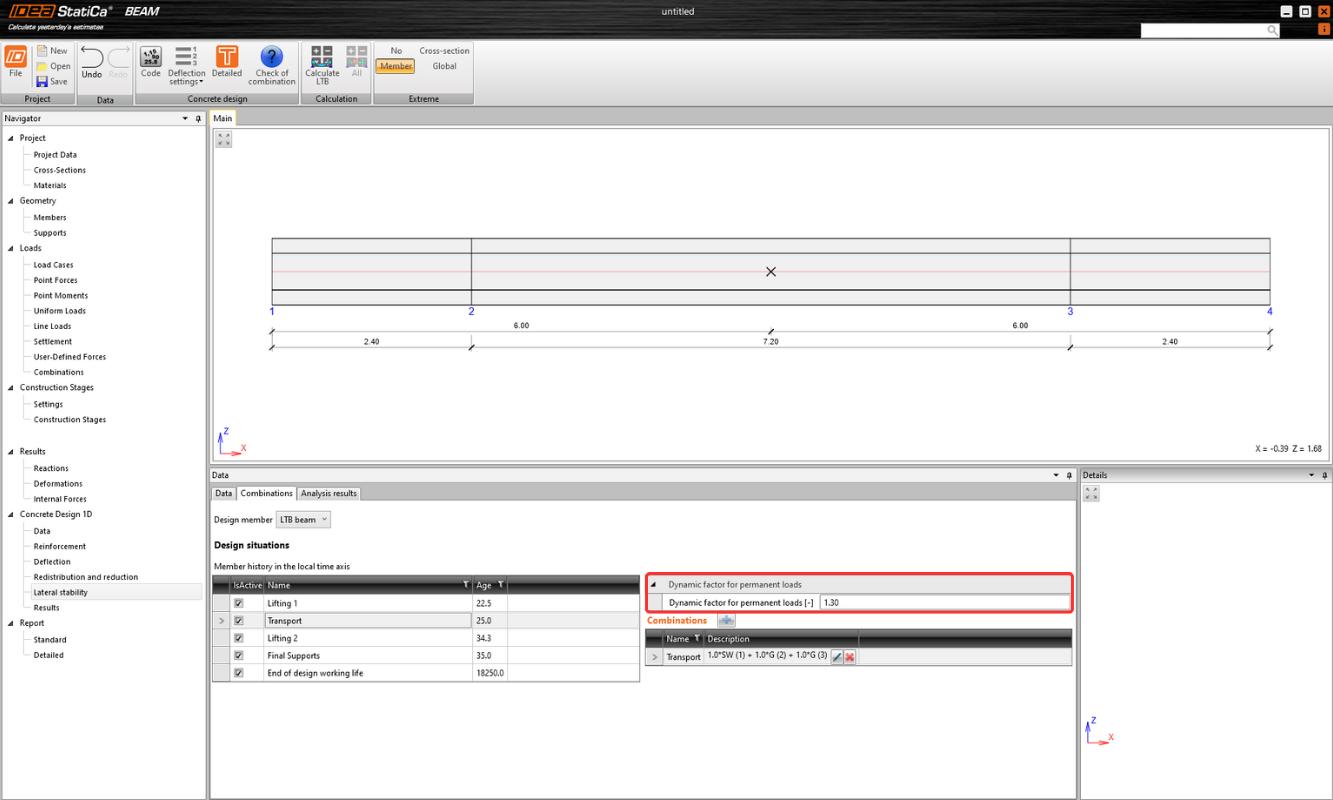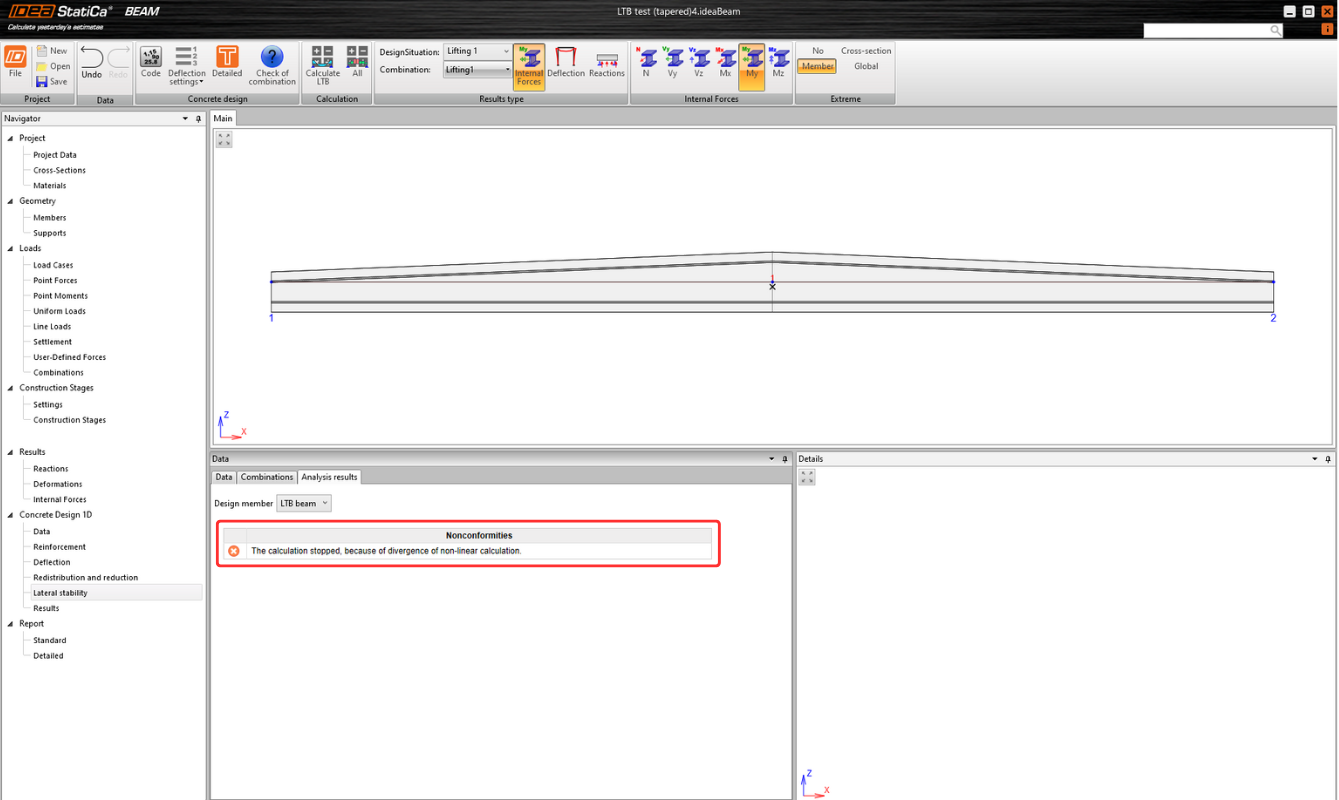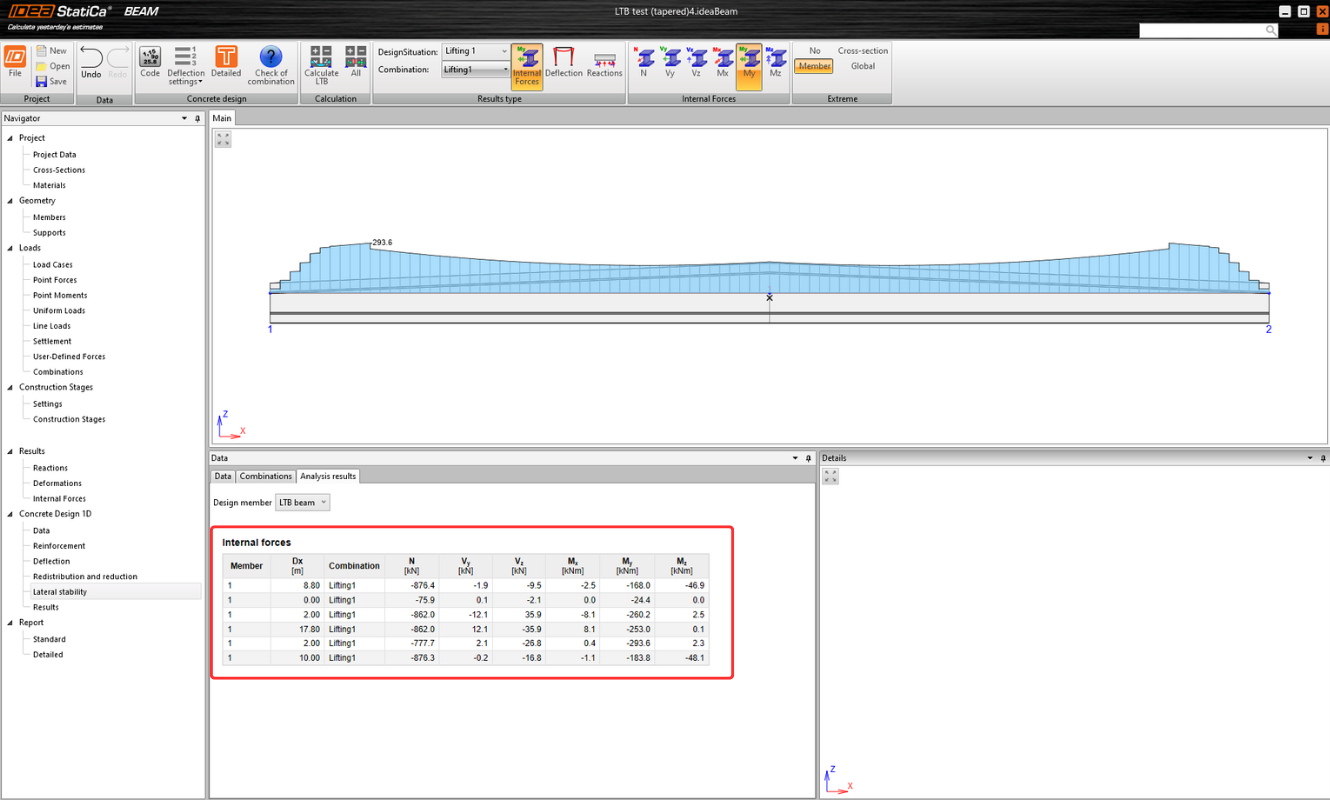Lateral torsional buckling for prefabricated beams
LTB is a stability failure that occurs in slender beams under bending, causing lateral displacement and twisting. It typically affects long and slender prefabricated beams. Checking for LTB is crucial to prevent sudden failure, optimize structural design, and ensure compliance with safety codes. It is essential to verify all construction stages, including lifting and transportation. The solution is suitable for any reinforced concrete and prestressed (pre-tensioned) pre-fabricated concrete beams.
Verify your design
The option can be selected in the Design 1D - Data section next to the Simplified Check and Do Not Calculate options. All necessary input belongs to the Lateral Stability section. In the case of simplified verification, only the basic dimensions need to be entered. For advanced analysis, more detailed input is required, including construction history, imperfections, and other parameters.
What impacts the analysis?
Construction stages
Each design situation requires specific inputs due to varying boundaries and times for the code-check. The times for each design situation can be set independently from the construction stages set at the beginning. Concrete properties, such as fck and Ecm, are automatically calculated based on the specified times but can be manually defined by the user if needed.
Imperfection
Also, the value of an initial lateral imperfection can be defined separately for each design situation. There are two options for the definition of lateral imperfection:
- Geometric imperfection – where IDEA StatiCa Beam calculates deformations due to creep and shrinkage. But first, the Initial imperfection needs to be set. It can be a) By code – imperfection is assumed according to EN 1992-1-1, chap. 5.9 (2) as L/300 or b) User-defined.
- Overall imperfection – resulting lateral imperfection has to be defined by user.
Inputs for Lifting
Two types of lifting can be defined: vertical slings or inclined slings, each with specific calculation conditions. The position of the lifting points must be specified in both the longitudinal and transverse directions of the beam.
Inputs for transport
Transport refers to the scenario where the beam is loaded onto a truck with a trailer. Deformation in the Rx direction is restrained solely by the trailer and treated as flexible support with defined stiffness. The user needs to define parameters such as the position of the truck, properties of the trailers, and others.
Inputs for Final supports and End-of-design working life
The static scheme for final supports and the end of the design working life is the same, with no option to define supports in the end-of-design working life scenario. The beam is always considered simply supported at its ends. Additionally, the beam can be laterally restrained at specified positions if desired.
Final supports are always positioned at the ends of the beam and can be represented by three types of support: Elastomeric bearings/Forks/Bearing pads with dowels.
Loads
The "Loads" section in the tree of entities in previous design steps defines all the load cases, loads, and load factors. In the section Lateral Stability, dynamic factors for lifting and transport phases and correct non-linear ULS combinations for each Design situation must be defined.
And what about that?
The advanced Lateral torsional buckling (LTB) analysis in IDEA StatiCa Beam provides (in addition to reactions, internal forces, and deformations) an evaluation of whether the beam is at risk of collapsing due to stability issues for each defined construction stage. The user can then continue to work with the internal forces and use them as input for validation in the IDEA StatiCa RCS application (input must be done manually).
In the event of a structural failure due to LTB, the calculation will not be complete, and the user will see an error message informing them of this situation.
In the opposite case, where the structure withstands, the resulting internal forces are displayed. In the graphical window above, they, as well as the reactions and deformations, are rendered visually.
Note
Please be aware that advanced LTB analysis only works for models created in the new version. The calculation will not proceed for older projects, and they must be remodeled.
Released in IDEA StatiCa version 24.1



